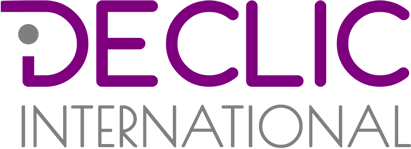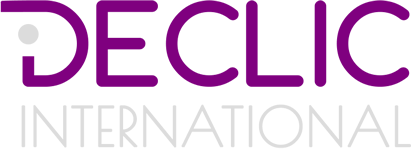12 inclusive leadership habits to accelerate gender balance (Part 3 of 3)

In the first and second parts of this three-part blog series we looked at the key gender balance challenges and barriers. Today we’re looking at how business leaders and managers can accelerate gender balance.
Twelve inclusive habits to improve gender balance
The leadership habits described below follow the Inclusive Leadership Propeller Model©. This model empowers business leaders and managers to navigate human differences smoothly, by consistently applying three skills: fairness, empathy, and proactivity. More information about it in my book “How to become an inclusive leader – The winning leadership habits in a diverse world.”
Fairness – Are you being fair?
Identify and challenge gender biases
Challenge yourself and others for considering a woman too “soft” or too “tough,” for associating a typical feminine leadership style with weakness, for excluding a woman from opportunities with the intention to protect her. Challenge gender stereotypes, even if they are positive about women, such as “I prefer to hire women because they pay more attention to details.” Such stereotypes tend to segregate women in certain roles. Ask yourself, Would the treatment be the same if it was a man? Challenge others when they tend to interrupt women during meetings (manterrupting) or take credit for their ideas.
Respond when you see ordinary sexist behaviours taking place
Such as colleagues asking a female colleague to serve tea, to take notes, borderline comments about women’s appearance, etc. Your behaviour has a positive impact not only on women but on all men who disapprove of sexist behaviours.
Post job ads as much as possible
This allows you to mitigate the influence of affinity biases from internal, invisible networks, which tend to be male-dominated, especially when it comes to more senior management positions. This also allows you to find out women’s career expectations, as they tend to be less vocal about them than men.
Check salary, pay raise, and bonus levels by gender
Be careful when you recruit, in order to make salary offers that won’t create or strengthen any gender pay gaps in your team. Use every pay raise season as an opportunity to ensure that there are no unjustified gender pay gaps, and take corrective action if needed. If you’re not doing anything to intentionally prevent the gender pay gap, most probably you’re having one.
Look at history and data per gender
Do you tend to hire, promote, or evaluate positively more men than women, or vice-versa? Are you engaging and retaining men and women in the same way? Is your talent pipeline gender balanced? Checking data regularly, particularly during talent management reviews, can help you spot any gender biases you might be unaware of.
Empathy – Are you treating others as they’d like to be treated?
Make your job adds gender neutral
Particularly in male-dominated industries, job descriptions tend to use male-coded words that put off female candidates. Example: “We’re a dominant engineering firm” is male-coded, while “We’re a community of engineers” is more gender neutral. You can review your job adds using free tools on the internet such as the “gender decoder.”[i] You should also make a clear distinction between core skills and additional skills. This will help you attract women who tend to apply only when they fulfil most of the job requirements.
Welcome maternity
Make life easier for working mothers and aspiring working mothers. This includes celebrating pregnancy announcements. I’ve seen managers who complained openly about women leaving on maternity, without realising the negative impact on women in their team, particularly young women planning to have a baby. You can also meet women before and after maternity/parental leave to clarify expectations around the work organisation and agree on the way to keep them posted on events and career opportunities while they are away.
Boost the confidence of women around you
We’ve seen that the confidence gap is a reality for many women. So, encourage them to speak up, to accept stretch assignments, give them credit. I met an American human resources director who was very good at assigning tasks to team members, particularly when they didn’t feel capable of it, and these tended to be his female direct reports. Also, be aware of the impact of the gender confidence gap on performance reviews, particularly if they are based on self-assessments. This practice favours those with higher self-confidence, and they tend to be men. A German human resources director in the construction industry once told me that she was observing annual performance reviews in her company. She saw the few women directors starting their reviews, highlighting what they could have done better, while the men directors kicked off the conversations, boasting about their accomplishments. Curiously, those women had better results than most men in that organisation.
Support work-life integration
This includes being open to flexible working without penalising those who benefit from it. I will dedicate another three-part blog series specifically on this topic. You can also download for free the sample chapter “Supporting work-life integration” of my book “How to become an inclusive leader” by clicking here.
Proactivity – Are you accelerating positive change?
Show visible support to gender diversity initiatives
Participate in women’s networks and gender diversity events (common around March the 8th, the international women’s day). If there’s nothing going on in your company, consider taking the lead. You can also use every opportunity to raise the awareness of male colleagues about the challenges and benefits of gender balance.
Look for gender diverse shortlists of candidates
This is an effective rule to force you to look for qualified female candidates who you might have otherwise overlooked. This also works if you’re trying to increase the proportion of men in your team. Of course, final decisions must always be based on skills and competence. Research tells us that having at least two women in a shortlist, instead of just one, increases massively your probability of hiring qualified female candidates.
Mentor women
Mentor women so that they can better understand and navigate the unwritten rules of the political business game. If you’re a man, this is also an opportunity for you to understand women’s challenges and expectations. You can join official existing mentorship programs in your company. Or you can informally meet with your mentees, agreeing on a cadence of meetings.
Sponsor women
This means advocating for their advancement when they are not in the room. Several studies point at sponsorship as the key accelerator of gender balance. A McKinzey study looking at the “secret” of women who made it into the leadership ranks found that ninety percent of them had significant sponsorship.[ii]
***
Thanks for taking the time to read this post. Let me know what you think about it in the comments below.
This is an excerpt of my book “Succeed as an inclusive leader – Winning leadership habits in a diverse world”.
Looking for the best train the trainer training on inclusive leadership? Register for the next Inclusive Leadership Mastery Course. Click HERE to find out more about it.
ABOUT THE AUTHOR
THAIS COMPOINT is a top global specialist in inclusive leadership. Her achievements have been acknowledged with 15 awards world-wide, including the prestigious “2019 Top Global Diversity and Inclusion Leaders Award”. She’s a speaker, author, facilitator, and consultant with 19 years of experience. Thais spoke at three TEDx events, is the author of “Succeed as an inclusive leader”, the creator of the Inclusive Leadership Global Conference, and the host of the YouTube show and podcast “The Inclusiveship Show”. Thais is also the founder and CEO of Déclic International, a global boutique consultancy that she founded after leading the inclusion & diversity strategies of three Fortune 500 companies: Vinci, Coca-Cola Enterprises and Cisco.
References
References
[i] shttp://gender-decoder.katmatfield.com/about.
[ii] Johanna Barsh and Lareine Yee, Unloccking the full potential of women at work, McKinsey&Company, 2012.

Are you an inclusive leader? Take the inclusive leader quiz and find out!
[viralQuiz id=1]



